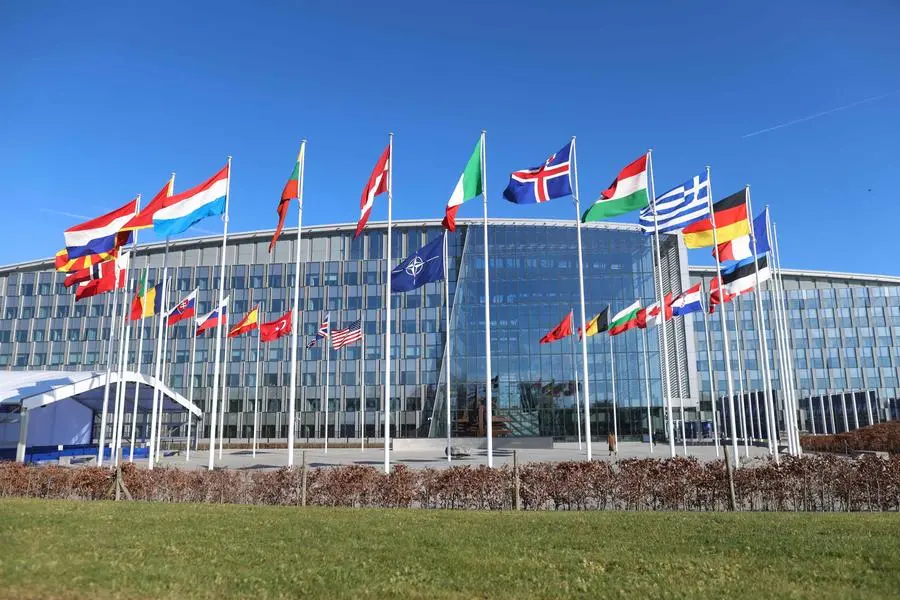
Finland joins NATO
Finland has officially become the latest member of the North Atlantic Treaty Organization (NATO), the world’s largest security alliance. Since its establishment on April 4, 1949, NATO has continuously expanded, but the inclusion of the tiny Western European nation is a historic moment in the alliance’s 74-year-long history.
Finland’s determination to join the coalition was driven by Russia’s aggression towards Ukraine. Russian President Putin cited NATO’s increasing presence at his country’s borders as the main reason for his action. Ironically, the war appears to have had the opposite effect, as the alliance, led by the United States, has now reached Russia’s western border with Finland.
The border between Finland and Russia is 1340 km long, longer than the 1215 km border between Russia and other NATO nations. With changing circumstances, NATO member countries now share a 2,555 km long border with Russia, and NATO soldiers have established new positions along Russia’s northern and northwest frontiers. They already have a significant presence along Russia’s borders with Norway, Latvia, Poland, and Lithuania.
With Finland’s inclusion, there are now seven NATO members in the Baltic Sea region, which is sure to be a concern for Putin. It is noteworthy that Article 5 of the NATO Charter states that an attack on one member country will be considered an attack on the entire organization, and all countries will respond together to such an attack. This assurance of security has brought Finland under NATO’s fold.
Has this development brought the world closer to the Third World War? Will it further infuriate President Putin? Has NATO breached a crucial red line this time to push humanity to the brink, and that too on its 75th foundation day? Or does this mean a checkmate to Russia, leaving the Kremlin with no other option but to blink first? A brief analysis of NATO’s background might help us find answers to these questions.
NATO was formed on April 4, 1949, with its foundation laid during the Second World War. America started NATO after the Soviet Union refused to withdraw troops from Eastern Europe and surrounded Berlin in 1948. A total of 12 countries became the alliance’s founding members, including the UK, France, Canada, Italy, Netherlands, Iceland, Belgium, Luxembourg, Norway, Portugal, and Denmark. The main objective of its formation was to protect friendly countries from the threat of the Soviet Union’s expansionist policies.
The group expanded even more rapidly after the fall of the Soviet Union in 1991. Eleven countries that were once satellite states of the Soviet Union and three former Soviet countries joined it, increasing the number of NATO member countries to 26. During this period, three more countries became members, and with Macedonia joining in 2020, the number of member countries reached 30. At present, NATO’s 30 member countries are located in Europe and the Americas.
All member states had agreed to spend at least 2 per cent of their GDPs on defense by 2025. Only the US, UK, Greece, and Poland have kept their word since the agreement was reached in 2014.
The US is currently the largest contributor to NATO, providing $811,140 (3.52%) annually, followed by the UK at $72,765 (2.29%), Germany at $64,785 (1.53%), and France at $58,729 (2.01%).
In terms of human resources, Japan and Germany are NATO’s largest contributors, with 55,000 and 35,000 troops, respectively. NATO’s recent decision to deploy 300,000 soldiers along the Russian border may not sit well with President Putin. Although NATO General Secretary Jens Stoltenberg has clarified that the group’s presence in Finland will depend entirely on Helsinki’s consent, there is little doubt about the prospect of NATO weapons being hosted by Finland. Russia has already warned that it will also increase its deployment along its western border if this happens.
Finland has managed to remain neutral in NATO’s enmity with Russia for the past seven decades. However, that changed last year in February when the Russian army attacked Ukraine. Finland submitted its formal request for NATO membership by May 2022, and it took less than a year for its entry into the alliance to be approved. The country has an army of 257,250 personnel, with 19,250 active soldiers and others in reserve battalions. Finland’s army boasts of 100 Main Battle Tanks (MBTs) and 672 artillery guns, while its air force has 107 combat aircraft, 19 attack helicopters, and 613 armed personnel carriers.
The country has experienced Russian aggression in the past, with the Russian Czar Alexander-I conquering it in 1809, only to be freed after the 1917 Communist revolution that led to the Soviet Union’s creation. Finland valiantly repulsed the Russian invasion during the Second World War and declared its neutrality under the 1948 Friendship Treaty with the USSR. However, it was difficult for the Finnish leadership to continue on the same path after Russia’s invasion of Ukraine. Seeking security under NATO’s umbrella became the only viable option, a move backed by around 80% of the country’s population. It remains to be seen how Russia will react, given that it has already warned of dire consequences if Finland joins NATO.
Russia’s offensive against Ukraine was meant to send a warning signal to NATO to stay away from its borders. Similarly, the US-led alliance has allowed Finland to become its latest member, which sends a message to Russia. However, mutual fear and distrust between both sides could lead to an already explosive situation turning into a nuclear Armageddon.
After President Putin annexed Crimea in 2014, the Western alliance, including NATO countries, tried to isolate Russia. Despite its dependence on Russian energy, the European Union (EU) actively participated in these efforts. In fact, the EU’s energy imports played a significant role in keeping the Russian economy running during the ongoing war. However, Finland’s NATO membership could change this situation as the world is now clearly divided into two poles.
On one side are Russia, China, North Korea, and countries like Iran, while on the other is the 31-member NATO. But where does India stand? Its crude oil imports from Russia have risen from 2% to 27% during the Ukraine war, with payments made in Indian currency. New Delhi has advocated peace and reconciliation, even offering mediation, but has refrained from outrightly castigating Russia. Meanwhile, it has also tried to support Ukraine through humanitarian aid.
India seems to be maintaining the same non-aligned stance that served it so well during the Cold War. No global conflict is in India’s interests. However, will it be possible for the country to stay out of every such war? India sits with the US and its allies on the Quad table to balance China’s threat in the region. The China equation also makes Russia a vital ally for India as it enjoys strong ties with both giant neighbours.
Pakistan is no longer a threat to India, nor does it hold the same significance in regional geo-politics as it did prior to 2014. It is evident that India has no pressure to side with any of the competing sides in Ukraine even if it spills to the global level. It is in a position to take an independent stand.
India’s business with China has reached $136 billion while it has reached up to $125 billion with America. Likewise, India’s trade with Russia has increased from $10 billion to $40 billion. This indicates that India has successfully balanced the geo-political situation and the government is moving forward with the country’s interests in mind. It is not under any pressure from any country.
Currently, the situation is explosive and a small spark could lead to a full-blown war. Russia is constantly increasing its military power in response to Finland being given NATO membership. If Ukraine were to also be given NATO membership after Finland, it would be a direct challenge to Russia, which could result in catastrophic consequences.


















